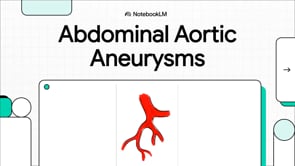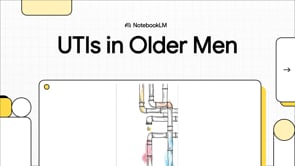This comprehensive review explains monoclonal gammopathy of renal significance (MGRS), a condition where abnormal proteins produced by blood cells damage kidneys without meeting traditional cancer criteria. Researchers found that 40-45% of patients with monoclonal gammopathy who undergo kidney biopsy have MGRS-related diseases, requiring specialized clone-directed therapy rather than standard immunosuppressive treatments. The article details how these proteins cause various kidney injuries, the high recurrence rate after transplantation (approximately 90% if untreated), and the importance of early diagnosis through specific blood tests and biopsies.
Understanding Monoclonal Gammopathy of Renal Significance: When Abnormal Proteins Damage Your Kidneys
Table of Contents
- Introduction: Why This Condition Matters
- How Doctors Classify These Blood Disorders
- The Diagnostic Gap in Kidney Disease
- How Abnormal Proteins Damage Kidneys
- Types of Kidney Damage in MGRS
- How MGRS is Diagnosed
- Treatment Approaches for MGRS
- What This Means for Patients
- Limitations of Current Knowledge
- Patient Recommendations
- Source Information
Introduction: Why This Condition Matters
Kidney disease affects approximately 37 million people in the United States alone, making it a significant cause of illness and death. While hypertension and diabetes are the most common causes of chronic kidney disease (CKD), monoclonal gammopathy has emerged as an important cause of kidney injury that many patients and even some doctors may not recognize.
Monoclonal gammopathy refers to abnormal proteins produced by clonal plasma cells or B lymphocytes that can damage various parts of the kidney. This review focuses specifically on monoclonal gammopathy of renal significance (MGRS), which describes conditions where these abnormal proteins cause kidney damage even when the blood cell disorder doesn't meet the formal criteria for cancer.
How Doctors Classify These Blood Disorders
The medical community classifies monoclonal gammopathy disorders based on the amount of abnormal cells (tumor burden) and whether they're causing organ damage. Treatment is typically recommended only when both criteria are met.
For multiple myeloma, diagnosis requires either more than 10% plasma cells in the bone marrow or a monoclonal spike greater than 3 grams per deciliter in blood tests, along with organ damage defined by the CRAB criteria:
- Hypercalcemia (high blood calcium)
- Renal insufficiency (kidney problems)
- Anemia (low red blood cells)
- Bone lesions
In 2014, the International Myeloma Working Group added three additional criteria that strongly predict progression to symptomatic myeloma:
- More than 60% bone marrow plasma cells
- Serum free light-chain ratio greater than 100 with the involved free light chain level exceeding 10 mg per deciliter
- More than one bone lesion on magnetic resonance imaging
For chronic lymphocytic leukemia (CLL), treatment criteria include lymphocytosis (more than 5000 leukemic cells per cubic millimeter) plus either anemia, thrombocytopenia (low platelets), or symptomatic lymphadenopathy (swollen lymph nodes) or splenomegaly (enlarged spleen).
Patients who meet tumor burden criteria but have no organ damage receive diagnoses like smoldering multiple myeloma or low-grade CLL. Those who don't meet either criteria are diagnosed with monoclonal gammopathy of undetermined significance (MGUS). By definition, patients with MGUS and smoldering myeloma should not have any organ damage.
The Diagnostic Gap in Kidney Disease
Traditional classification systems create a significant gap for patients with kidney damage caused by monoclonal proteins who don't meet the tumor burden criteria for cancer diagnosis. These patients don't technically have cancer from a hematologic perspective, but they still have a clonal disorder that requires specific treatment.
This diagnostic gap has historically prevented patients from receiving appropriate therapies. For decades, doctors primarily attributed kidney damage from monoclonal immunoglobulins to overt cancers like multiple myeloma. Only in recent years has it become clear that kidney disorders can be induced by nephrotoxic monoclonal immunoglobulins regardless of tumor burden.
MGRS fills this diagnostic gap without changing the definition of malignant processes. It includes any B-cell or plasma-cell clonal disorder that doesn't meet current cancer treatment criteria but produces a nephrotoxic monoclonal immunoglobulin that directly or indirectly causes kidney disease.
MGRS-associated kidney diseases have three distinctive features that separate them from other conditions:
- They don't respond well to standard immunosuppressive regimens used for autoimmune kidney diseases
- Patients have approximately 90% recurrence rate after kidney transplantation if the monoclonal gammopathy isn't eliminated before or immediately after transplantation
- Affected patients face increased risk of progression to corresponding hematologic cancers
How Abnormal Proteins Damage Kidneys
Monoclonal immunoglobulins can cause kidney damage through different mechanisms depending on whether they come from high or low tumor burden conditions.
In high tumor burden situations (like multiple myeloma), the primary mechanism is light-chain cast nephropathy, where monoclonal light chains bind to Tamm-Horsfall protein in the kidneys, forming obstructive casts. This process requires high levels of serum free light chains (usually exceeding 150 mg per deciliter) and isn't considered an MGRS-related lesion.
MGRS typically involves lower levels of monoclonal gammopathy with different damage mechanisms. The most common mechanism involves misfolding of monoclonal immunoglobulin light chain fragments, forming toxic amyloid multimers and amyloid fibrils that deposit in tissues.
Other mechanisms include:
- Light chains with mutations that resist normal breakdown processes, forming crystals that damage kidney tubule cells
- Monoclonal immunoglobulins with unusual characteristics (hydrophobic residues, abnormal glycosylation, positive charge) that promote aggregation and deposition in kidney structures
- Cryoglobulins that precipitate below body temperature, causing inflammation and blockage of small blood vessels
- Activation of complement system pathways leading to inflammation and tissue damage
- Targeting of specific kidney antigens similar to autoimmune diseases
Types of Kidney Damage in MGRS
The majority of MGRS-related kidney diseases are glomerular disorders (affecting the kidney's filtering units), with two main exceptions: light-chain proximal tubulopathy and crystal-storing histiocytosis.
Doctors classify MGRS-related kidney lesions based on how the monoclonal immunoglobulin deposits appear under electron microscopy:
Organized deposits appear as: - Fibrils (seen in immunoglobulin light-chain-associated amyloidosis) - Microtubules (seen in immunotactoid glomerulonephritis or cryoglobulinemic glomerulonephritis) - Crystals or inclusions (seen in light-chain proximal tubulopathy)
Nonorganized deposits are observed in monoclonal immunoglobulin deposition disease (MIDD) and proliferative glomerulonephritis with monoclonal immunoglobulin deposits (PGNMID).
No visible immunoglobulin deposits occur in C3 glomerulopathy with monoclonal gammopathy and thrombotic microangiopathy associated with monoclonal gammopathy.
The specific type of kidney damage determines both the symptoms patients experience and the appropriate treatment approach.
How MGRS is Diagnosed
The exact incidence and prevalence of MGRS-associated diseases remain unknown. Research from Olmsted County, Minnesota, shows that MGUS is 7 to 59 times more common than glomerular diseases. MGUS rates are higher in men and increase significantly after age 50.
Since glomerular diseases also increase with age, it's not uncommon for patients with kidney disease to have MGUS as well. Two independent studies have revealed that MGRS-related diseases are present in 40-45% of patients with monoclonal gammopathy who undergo kidney biopsy.
Several clinical indicators suggest possible MGRS:
- High urinary protein levels (exceeding 1.5 grams per day)
- Abnormal serum free light-chain ratio
- Microscopic hematuria (blood in urine visible only under microscope)
Doctors should consider kidney biopsy for patients with monoclonal gammopathy who have these findings or show rapid kidney function decline.
Once MGRS-related disease is suspected, hematologic evaluation is essential to identify the specific clone producing the harmful immunoglobulin. This typically involves:
- Serum and urine protein electrophoresis
- Immunofixation testing
- Serum free light-chain assay
- Bone marrow biopsy (often necessary for clonal identification)
- Possible lymph node biopsy or peripheral-blood flow cytometry
- Imaging studies (CT scans, sometimes with PET) to locate lesions outside bone marrow
The likelihood of finding the problematic clone varies by condition. It's highest in AL amyloidosis, MIDD, and light-chain proximal tubulopathy (plasma-cell clones), while approximately 50% of immunotactoid glomerulonephritis cases involve CLL lineages. Finding the clone is most challenging in PGNMID, where over 80% of patients show negative hematologic evaluation initially.
Treatment Approaches for MGRS
The unique pathophysiology of MGRS requires different treatment strategies than those used for either autoimmune kidney diseases or hematologic cancers. Understanding these differences is crucial for achieving good patient outcomes.
While autoimmune kidney disease treatment focuses on renal histopathological findings, MGRS treatment should target the specific clone (B-cell or plasma-cell) producing the nephrotoxic immunoglobulin. Research shows that clone-directed therapy works significantly better than standard immunosuppressive therapies like glucocorticoids, calcineurin inhibitors, mycophenolate mofetil, cyclophosphamide, or low-dose rituximab.
Successful outcomes in MGRS patients, including preserved kidney function, require clone-directed therapy using agents previously reserved for overt hematologic cancers. Previous reluctance to use these agents stemmed from concerns about myelotoxicity from prolonged alkylating agent use, potentially leading to myelodysplastic syndrome and acute leukemia.
Fortunately, newer anti-myeloma and anti-lymphoma therapies with better side effect profiles have transformed MGRS prognosis. Treatment goals also differ from cancer treatment—since most MGRS patients don't have immediately life-threatening conditions (unless extrarenal organs are involved, as in AL amyloidosis), the primary objective is preserving kidney function rather than immediate life preservation.
This distinction is crucial when balancing treatment benefits against potential toxicities, especially for patients with advanced chronic kidney disease.
What This Means for Patients
For patients with kidney disease and monoclonal gammopathy, this research has significant implications. The 40-45% prevalence of MGRS among biopsied patients with monoclonal gammopathy means that nearly half of these individuals may have a treatable condition that requires specific targeted therapy rather than standard approaches.
The extremely high recurrence rate after kidney transplantation (approximately 90%) highlights the critical importance of identifying and treating the underlying clone before considering transplantation. Without addressing the source of the harmful immunoglobulins, transplantation alone provides only temporary relief.
Patients should be aware that the risk of progression to hematologic cancer exists with MGRS, making ongoing monitoring essential even after successful treatment of the kidney manifestations.
Limitations of Current Knowledge
Despite significant advances, important limitations remain in our understanding of MGRS. The exact incidence and prevalence of MGRS-associated diseases are still unknown, making it difficult to assess the full scope of this health issue.
Diagnostic challenges persist, particularly for conditions like PGNMID where over 80% of patients initially show negative hematologic evaluation despite clear evidence of kidney damage from monoclonal immunoglobulins. This gap suggests that current detection methods may miss some clones producing harmful proteins.
The research also notes that genetic testing for markers like B-cell lymphoma 2 (BCL2) and t(11;14) may provide additional treatment options, but these approaches aren't yet standardized across all medical centers.
Patient Recommendations
Based on this comprehensive review, patients with kidney issues should consider the following:
- Seek specialized evaluation if you have both kidney disease and monoclonal gammopathy, as 40-45% of such patients may have MGRS requiring specific treatment
- Request appropriate testing including serum free light-chain assays, protein electrophoresis, and immunofixation if kidney disease has an unclear cause
- Consider kidney biopsy if you have monoclonal gammopathy plus high urine protein (>1.5 g/day), abnormal light-chain ratios, or microscopic hematuria
- Discuss clone-directed therapy options with your hematologist and nephrologist if diagnosed with MGRS, as this approach is superior to standard immunosuppression
- Address the underlying clone before considering kidney transplantation, given the 90% recurrence rate without proper treatment
- Maintain ongoing monitoring even after successful treatment due to the risk of progression to hematologic cancers
Patients should work with a multidisciplinary team including nephrologists and hematologists who understand the unique challenges of MGRS and can provide the most current treatment approaches.
Source Information
Original Article Title: Monoclonal Gammopathy of Renal Significance
Authors: Nelson Leung, M.D., Frank Bridoux, M.D., Ph.D., and Samih H. Nasr, M.D.
Publication: The New England Journal of Medicine, May 20, 2021
DOI: 10.1056/NEJMra1810907
This patient-friendly article is based on peer-reviewed research originally published in The New England Journal of Medicine. It preserves all significant findings, data points, and clinical recommendations from the original research while making the information accessible to educated patients.





